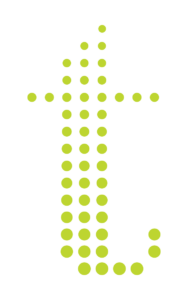THINK
As a reminder, management is the responsibility of accomplishing goals through the work of others. Clarity management requires handling six sub-responsibilities excellently, abbreviated DECIDE. These include:
● Design: How are responsibilities and processes structured to achieve goals? This requires a clear visualization of what needs to be done to achieve a goal, the talents required to successfully fulfill those responsibilities, and an understanding of the processes that will enable coordination across those workstreams.
● Employ: Putting the right people into the right roles in the Design to achieve the goals. Sometimes this will require people outside the organization (hiring), while in other cases it will be a matter of reshuffling responsibilities within (or across) teams.
● Clarify: Ensuring ongoing awareness and understanding of the goals and Design, as well as the broader cultural requirements for delivering on them.
● Investigate: Proactively gathering evidence of how the Design is working (or not) to achieve the goals.
● Diagnose: Turning confusion into clarity by taking the output of the Investigation (comparing goals and Design to outcomes) and determining the source of the gaps.
● Evolve: Consistently using the findings from Diagnosis to iterate on the Design or allocation of people (Employ) to better achieve the goals.
Design is where the management loop begins — it’s how work is organized into the machines required to achieve goals.
Design is about how things should work. How are we going to convert goals into work? Without productive work, a group of people cannot achieve goals. And goals are what it is all about. Good design should not only ensure that everyone knows who is responsible for what, but that those responsibilities, and the interfaces between them, make sense as a way to achieve the team’s goals. An organization starts with an objective: a purpose or (if not stated) a strategy. People need to do the right work, the right way, at the right time in order to achieve that higher-level goal. To achieve the company’s goals, people must accept and execute responsibilities: timeless and universal expressions of areas of ownership. Unlike goals, responsibilities are not time-bound. As long as a person holds a responsibility, they can never “finish” it. Responsibilities are designed and assigned such that if everyone executes them well, the organization will achieve its goals and ultimately its purpose.
To use a sports example, a football team may have a goal of making the playoffs this season (time-bound and specific). In order for the team to achieve the goal, each person on the team must accept responsibilities such as coaching and mentoring players, developing defensive strategies, and being an excellent quarterback (timeless and universal). When people play those positions well, the team wins and gets to the championship. Responsibilities exist even when people aren’t there to hold them. Going back to the sports example, not having a quarterback on the team is a major responsibility gap that needs to be addressed for the team to win. Knowing what responsibilities are required to achieve the goal is the critical first step to an effective design.
Responsibilities (in abstract) need to be converted into work, or in other words, combinations of responsibilities owned by an individual with outcomes they are held accountable to producing. So how do we convert responsibilities into work? First, we cluster them logically. For instance, it makes sense that counting money and modeling future cashflows are similar, and so should be owned by the same person. We call these clusters “jobs” – we convert big goals into responsibilities into work by first forming jobs. But just having a job doesn’t mean that people will succeed. They then have to work with other people effectively in order to get work done. The larger an organization grows, the more difficult it is to coordinate well. So there are two elements of “coordination” in good design: process and ownership. Process is about how work flows from one job to another, or how two jobs work together to produce outcomes. How is the process updated or clarified when it’s unclear? Ownership describes who owns which decisions, when.
So put all together, responsibilities, jobs, process, and ownership are the four pillars of good design:
1. Responsibilities: What work must be accomplished to achieve the goal?
2. Jobs: How should that work logically be clustered together? Who owns the resulting clusters?
3. Process: Who works with who to do what? How is the process updated / clarified when unclear?
4. Ownership: Who gets to make decisions, when? Who serves as an escalation point when something is unclear or there’s an unresolved disagreement? Who is held accountable, and how?
To convert purpose (or strategy) into work, we must design. We must identify all the work that needs to get done, design jobs so that work gets done by individuals (working alone or in teams), design process so that the people know how to work together, and design decision rights so that when problems happen, everyone is clear on who owns next steps.
Keep in mind that a good design shouldn’t be static. It’s critical that any explicit design is both accurate to how the work actually gets done, and is frequently updated to take advantage of ongoing learning and changing contexts.
REFLECT
-
Can you clearly articulate the current designs for your team?
-
What makes you believe those are the right designs for achieving your goals?
-
In the past three months, how often have you reevaluated your designs?
TRY
-
On a piece of paper, write down your team’s key goals.
-
Below those goals, describe the responsibilities that need to be met to deliver on them/
- Think about your team – who would be the best fit to own those responsibilities? What if any gaps exist?
-
Consider how those responsibilities intersect. Draw out a basic flow chart for how responsibilities should flow from one to another to accomplish the goals.
- Look at the overall design you’ve created. Write down some of the key assumptions you’re making about how you expect it to work to achieve the goals.
-
In the future, if the team has failed to achieve the goals, revisit those assumptions. Where is the design breaking?


